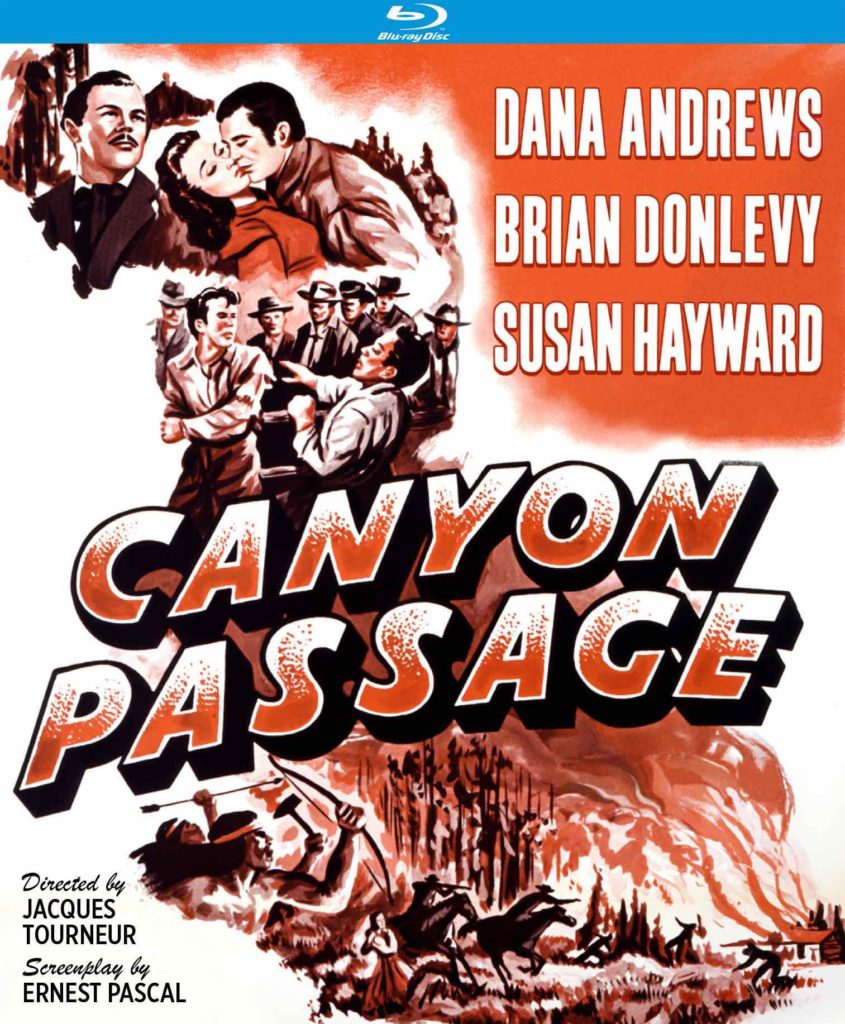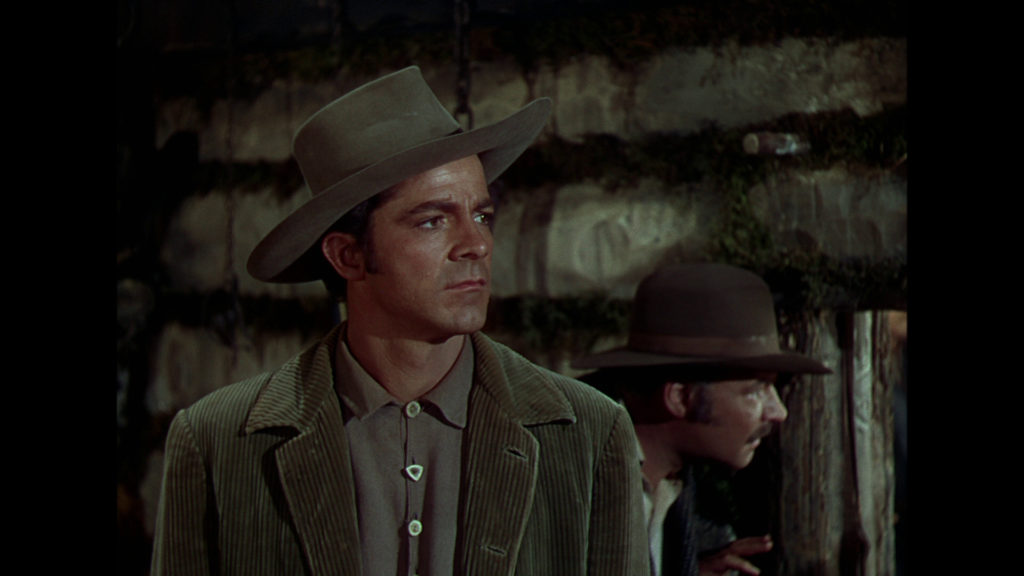Light And Dark Western In Rich Color From Director Jacques Tourneur

DIRECTED BY JACQUES TOURNEUR
STREET DATE: MARCH 10TH, 2020/KINO LORBER STUDIO CLASSICS
With its many lantern-lit, wood-smoky, and grit-textured cabin interiors; its sun-drenched, leaves-dappling, and dust-raising scenery; and the clear blue-by-burnished orange that frames the doorways looking out, enriching the thick atmosphere hanging over; the many breathtaking views of director Jacques Tourneur’s 1946 Pacific Northwestern Canyon Passage paint a broad, oil canvas-like portrait of frontier life strongly evoking film co-star and story-wandering minstrel Hoagy Carmichael’s “Ole Buttermilk Sky”. Like the visual richness of that later musical standard, 1850’s Oregon Territory, with its pine log-stacked outposts built on the edge of dense forestry, is historically and dramatically depicted as a civilization literally carved out of the wilderness, and the battles, fisticuffs, rough rides, and gold spikes rising out of its title canyon passages settle beautifully if not at all easily on its Western mythmaking. Turning up while brightening down its Technicolor lens on the push and pull between town and nature, settlers and natives, and romance and freedom, Canyon Passage both stands for and upends the thematic heart and dramatic soul of classic Western filmmaking.

Dana Andrews plays a frequently travelling merchant and adventurer who, as the film opens, is on a long journey between woodland outposts. Accompanied by a strong-willed and passionate society lady-turned-pioneer woman played by Susan Hayward, their light banter and easy rapport may initially indicate a strong romantic attachment between them; but the formerly fashionable female, it turns out, is affianced to Andrews’ character’s best friend, a morally dubious banker and faro-gambler played by Brian Donlevy. With romantic attachments extending from Andrews to a home-and-hearth loving rancher’s foster daughter, played by Rose Hobart, who in turn has her eyes set on a more sedate and less adventurous young farmer, the four- and even five-sided romantic tangles play out against a violently escalating conflict with a Native American tribe. As Donlevy stealthily steals from the encampment’s gold miners, and as Andrews and Hayward stealthily sublimate their shared passion, the tribe finally wreak havoc on the settlers when a local drunk and vagabond, played to malevolent and truly terrifying effect by Ward Bond, rapes and murders two of the tribe’s bathing maidens.
Compassionately watched and wryly commented on by mandolin-playing and mule-riding Hoagy Carmichael, whose drawling oracular cool was used to great musical supporting effect in mid-40’s films ranging from To Have and Have Not (1943) to The Best Years of Our Lives (1946), Canyon Passage remains startlingly complex for its more familiar Western story-elements, particularly in its portrayal of sudden violence arising from (at first) peaceful circumstances. The sauntering clip with which the film establishes its characters and settings, as innovative Technicolor cinematographer Edward Cronjager visually registers the many scenic advantages of its Pacific Northwest setting described in the first paragraph, gives way to a truly shocking eruption of war whoops, scalpings, and cabin burnings in its bloody and destructive third act. As the smoke clears, a once thriving settlement lays decimated even as the still hearty pioneers prepare to bury their fallen dead and rebuild their lives anew.
Director Jacques Tourneur, then best known for three horror films made for RKO producer Val Lewton, including Cat People, I Walked With A Zombie, and The Leopard Man (all 1943), and who would the very next year helm the classic film noir Out of the Past (1947), brings his accustomed intensity and recognizable atmosphere to his first Western, along with the careful attention to character and detail he would later impart to a subsequent Western, the ruggedly pacifistic Stars In My Crown (1950). Like the genres for which the director is best known, horror and film noir, culminating in his 1958 masterpiece of the supernatural thriller Curse of the Demon, also starring Dana Andrews, Canyon Passage seamlessly blends psychological realism and its very human situations and motivations with strong atmosphere and painterly compositions. For its darker elements, as well as its light, Jacques Tourneur’s noir Western adventure pays full dividends on its poster-cover image of illicit love, barroom brawls, and war-rampaging hellfire; all on the motion-visual backdrop of some of the finest natural scenery one is likely to find in any Technicolor film.

Kino Lorber presents a fine transfer of always tricky color process source elements with the wide-opened (and light-streaming) frames of its Oregon location-shot footage. Also included is another fine commentary from Toby Roan, who is here particularly adept at highlighting what makes Canyon Passage so special and distinctive among Westerns of the mid-late 1940’s. American life was never as hard as on the trail, and the conflicts arising on them never as brutal and terrifying, but the country was also at its most beautiful, and its people — settlers and natives alike — were certainly at their heartiest. More than any other Western of its era, perhaps, Canyon Passage captures that complex and compelling spirit of the Old West.
The images used in this review are credited to DVDBeaver. Thanks to Kino Lorber for providing a review copy.

